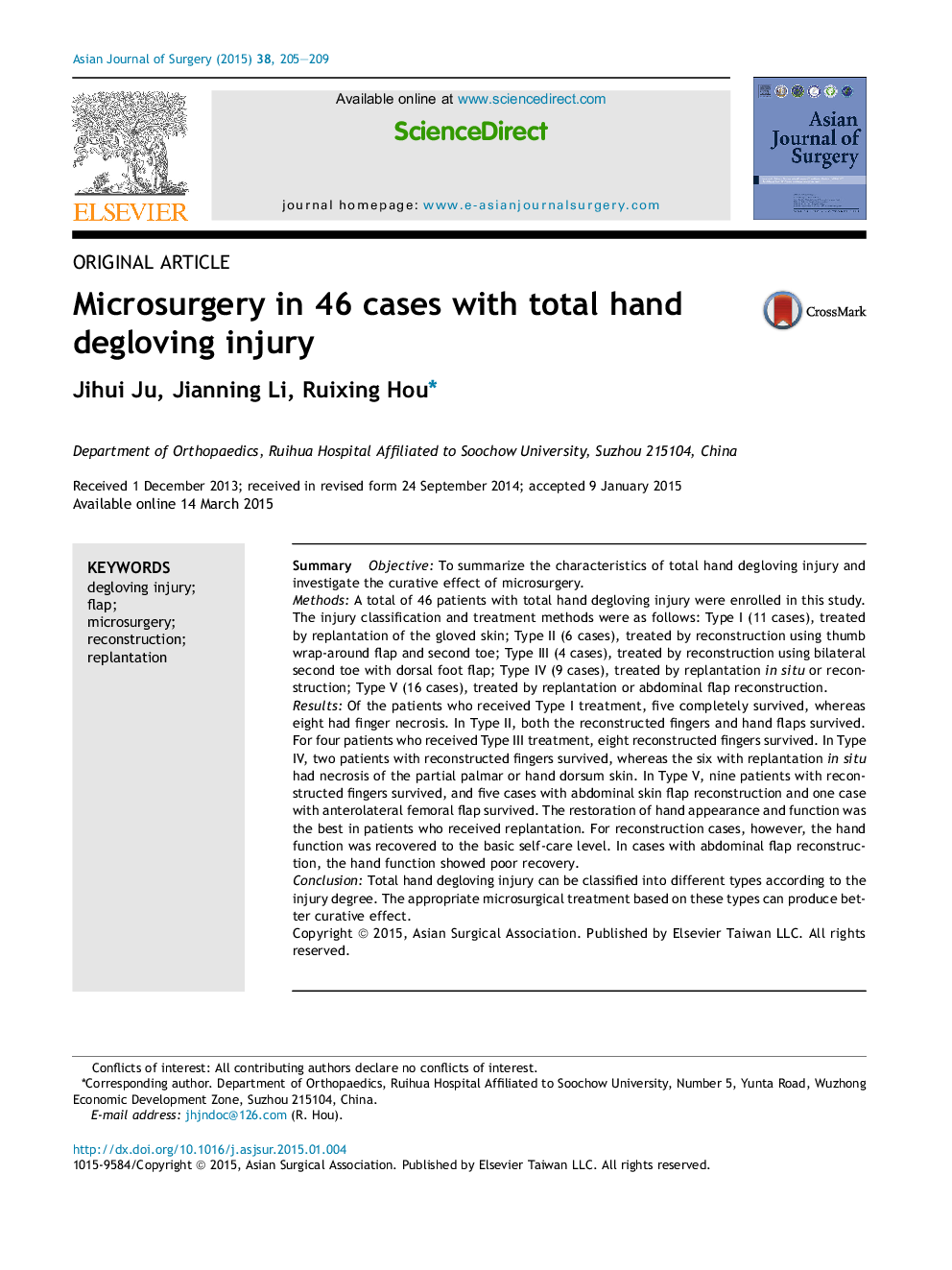| Article ID | Journal | Published Year | Pages | File Type |
|---|---|---|---|---|
| 4282560 | Asian Journal of Surgery | 2015 | 5 Pages |
SummaryObjectiveTo summarize the characteristics of total hand degloving injury and investigate the curative effect of microsurgery.MethodsA total of 46 patients with total hand degloving injury were enrolled in this study. The injury classification and treatment methods were as follows: Type I (11 cases), treated by replantation of the gloved skin; Type II (6 cases), treated by reconstruction using thumb wrap-around flap and second toe; Type III (4 cases), treated by reconstruction using bilateral second toe with dorsal foot flap; Type IV (9 cases), treated by replantation in situ or reconstruction; Type V (16 cases), treated by replantation or abdominal flap reconstruction.ResultsOf the patients who received Type I treatment, five completely survived, whereas eight had finger necrosis. In Type II, both the reconstructed fingers and hand flaps survived. For four patients who received Type III treatment, eight reconstructed fingers survived. In Type IV, two patients with reconstructed fingers survived, whereas the six with replantation in situ had necrosis of the partial palmar or hand dorsum skin. In Type V, nine patients with reconstructed fingers survived, and five cases with abdominal skin flap reconstruction and one case with anterolateral femoral flap survived. The restoration of hand appearance and function was the best in patients who received replantation. For reconstruction cases, however, the hand function was recovered to the basic self-care level. In cases with abdominal flap reconstruction, the hand function showed poor recovery.ConclusionTotal hand degloving injury can be classified into different types according to the injury degree. The appropriate microsurgical treatment based on these types can produce better curative effect.
